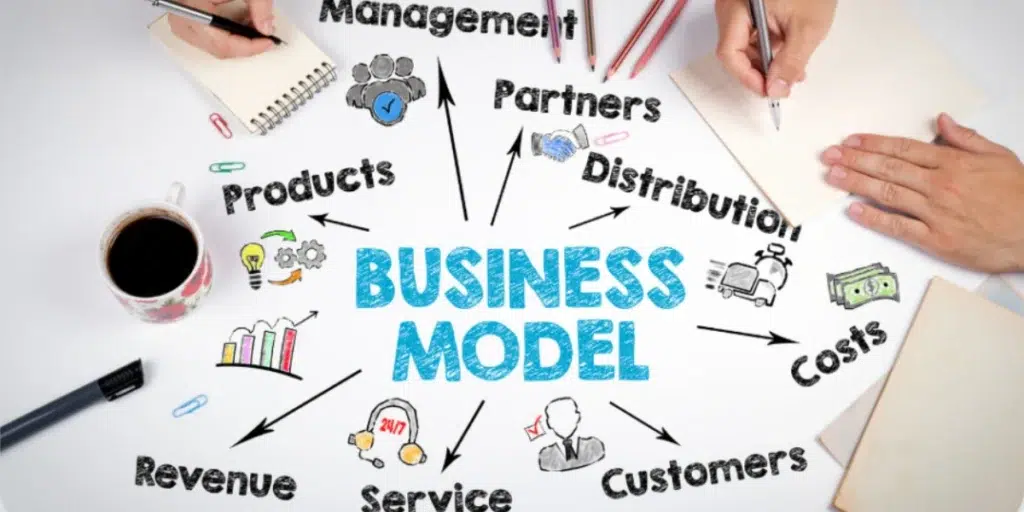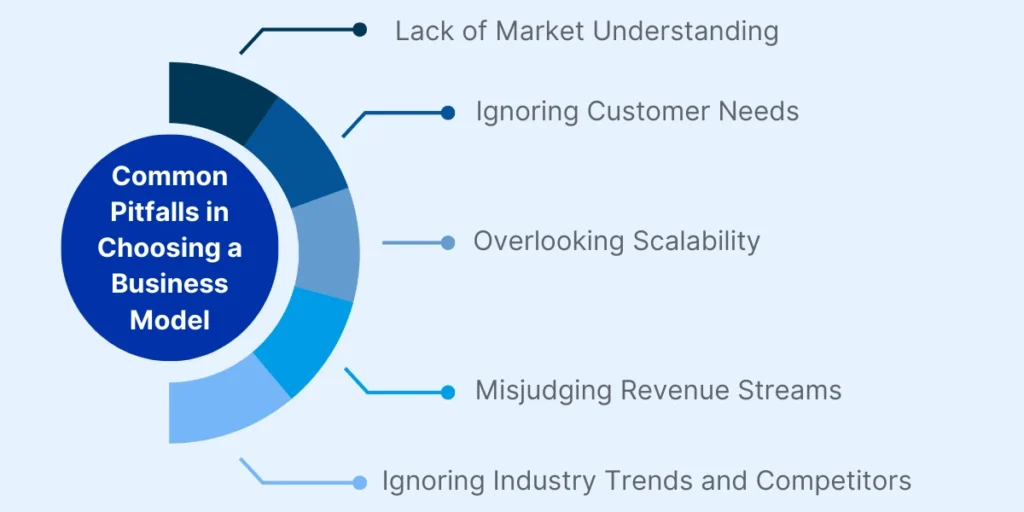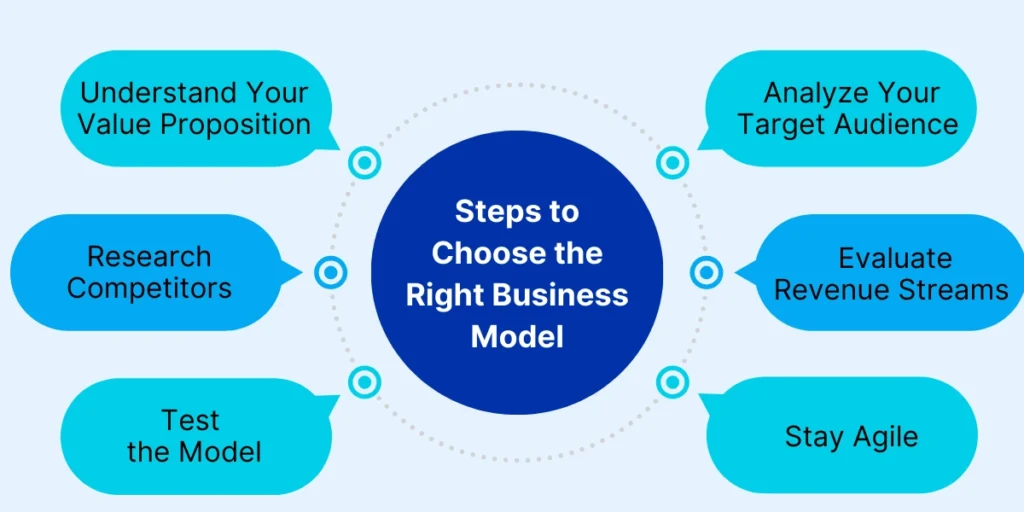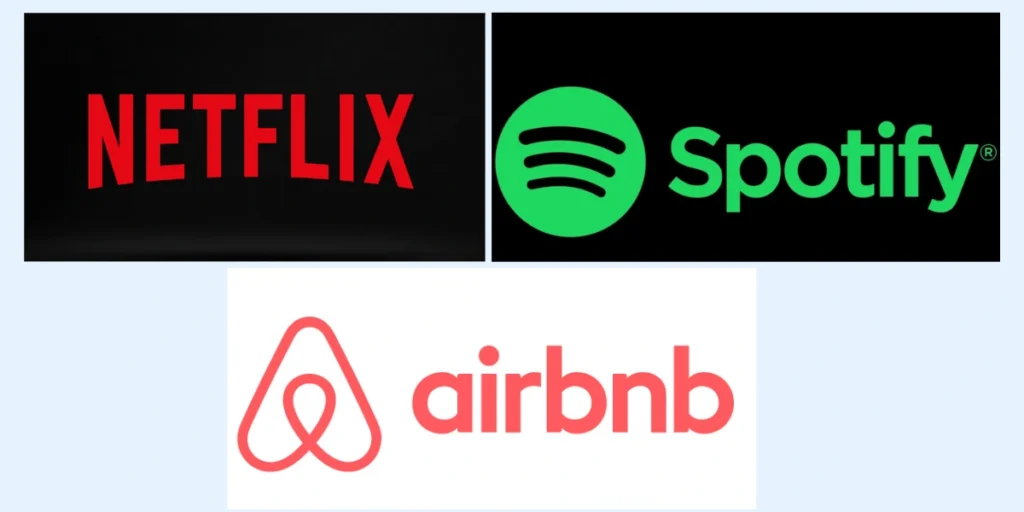Table of Contents
ToggleBuilding a Successful Business Begins With One Critical Decision – Choosing the Right Business Model.
Your business model defines how your company delivers value to customers, generates revenue, and sustains itself in a competitive market.
While this choice may seem straightforward, many entrepreneurs fall into common pitfalls that hinder growth and profitability.
In this blog we will help you navigate these pitfalls, offering insights and strategies to ensure your business thrives.
Let’s explore why the right business model matters, the traps to avoid, and the steps to craft a model that sets you up for success.
Why the Right Business Model Matters

At its core, a business model is the blueprint of your enterprise. It encapsulates your value proposition, revenue streams, customer relationships, and cost structure. Choosing the right business model ensures alignment with your mission, market trends, and scalability goals.
Think of iconic companies like Netflix or Amazon. Their innovative models revolutionized industries by delivering unparalleled value. Netflix’s subscription-based approach and Amazon’s customer-centric retail model weren’t accidental they were the result of careful research and bold decisions.
On the flip side, businesses that fail to choose the right model often struggle to connect with their audience, manage costs, or remain competitive.
For example, Kodak’s refusal to embrace digital photography left it obsolete, a stark reminder of the consequences of an outdated business model.
Choosing the wrong business model can cost you growth?
Get expert guidance to avoid costly mistakes and build a model that drives success.
Leveraging tools like the Venture Choice Workshop can be instrumental in identifying potential gaps and opportunities, ensuring your business model aligns with market demands.
This workshop provides practical frameworks and actionable insights that guide businesses through the complexities of model selection.
Moreover, a well-thought-out business model allows you to stay agile and competitive, adapting quickly to evolving market conditions.
It enables businesses to seize new opportunities, mitigate risks, and scale effectively.
Ultimately, choosing the right business model is not just about profitability it’s about longevity and relevance in a competitive world.
Common Pitfalls in Choosing a Business Model

To make the best choice, you must first understand the common mistakes entrepreneurs make while choosing a business model.
1. Lack of Market Understanding
Many businesses rush into operations without conducting thorough market research. Without understanding customer needs, competition, and industry trends, you risk designing a model that doesn’t resonate with your audience.
Effective research provides clarity on customer behavior and potential gaps your business can fill.
Understanding your market also helps in forecasting trends, enabling you to pivot and adapt.
Market insights form the backbone of informed decision-making, providing a clear pathway to sustainable growth.
2. Ignoring Customer Needs
A business model that overlooks the end user is destined to fail. For instance, launching a premium-priced product in a cost-sensitive market can alienate potential customers.
Focus on your customer’s pain points and design a model that addresses them effectively. Remember, customer-centricity often determines long-term success.
Engaging with customers through surveys, feedback sessions, and direct communication can unveil hidden needs and preferences.
Incorporating these insights ensures your business stays relevant and valuable.
3. Overlooking Scalability
Your business model must support growth.
Models with limited scalability such as heavily manual processes can stifle expansion and lead to inefficiencies.
Automating processes or leveraging technology can help scale operations efficiently.
Scalability is also about envisioning future growth.
Ask yourself: Can my business handle double the number of customers next year? If the answer is no, it’s time to reevaluate and optimize your model for scale.
4. Misjudging Revenue Streams
Relying on a single revenue stream is a risky strategy.
Diversification can protect your business from market volatility and economic downturns.
For example, adding a subscription-based option or affiliate partnerships can provide steady cash flow.
Using tools like the Venture Choice Workshop can help identify and test alternative revenue streams.
This ensures that your business remains resilient, even during challenging times.
5. Ignoring Industry Trends and Competitors
Sticking to outdated practices while competitors innovate can leave you behind.
Keep an eye on market shifts and be ready to adapt your model. A proactive approach ensures your relevance and helps you stay ahead of competitors.
Analyzing industry trends not only keeps you informed but also opens doors for innovation. Embrace emerging technologies, customer preferences, and regulatory changes to maintain a competitive edge.
By avoiding these pitfalls, you’ll be better equipped to create a solid foundation for your business.
Incorporating tools like the Venture Choice Workshop can provide actionable insights to refine your approach and eliminate guesswork.
Steps to Choose the Right Business Model

Once you’re aware of the pitfalls, the next step is to design a model for your goals and market.
Here are the steps you can take while choosing the right business model.
1. Understand Your Value Proposition
Ask yourself: What unique value does my business offer?
Your value proposition is the cornerstone of your business model.
Clearly articulating the benefits you bring to the table ensures that your business model resonates with your target audience.
For example, if your business saves customers time, emphasize this advantage in your offerings. A strong value proposition sets the tone for all other aspects of your business strategy.
2. Analyze Your Target Audience
Knowing your audience is critical for choosing the right business model.
Conduct surveys, create customer personas, and segment your audience to ensure your model aligns with their needs.
Audience insights guide decisions about pricing, delivery methods, and customer engagement strategies.
Effective audience analysis involves diving deep into demographics, psychographics, and purchasing behaviors.
This comprehensive understanding helps fine-tune your offerings and enhances customer satisfaction.
3. Research Competitors
Study competitors who are succeeding in your industry. Analyze their models to identify what works and where they fall short.
Use this knowledge to differentiate your approach. Observing competitor strategies often uncovers hidden opportunities for innovation.
Competitor analysis isn’t just about imitation it’s about inspiration. Learn from their successes and failures to craft a unique path for your business.
4. Evaluate Revenue Streams
Experiment with different revenue streams to find what works best. For example:
- Subscription-based models for recurring income.
- Freemium models to attract a large user base.
- Licensing models to monetize intellectual property.
Diversification ensures your business remains resilient. Additionally, using frameworks like the Venture Choice Workshop can help validate potential revenue streams before implementation. This workshop offers a structured approach to brainstorming and testing new ideas.
5. Test the Model
Before fully committing, test your business model.
Create an MVP (Minimum Viable Product) to validate assumptions and gather feedback.
This approach minimizes risks and provides actionable insights. Feedback loops from early adopters often lead to valuable refinements.
Testing also fosters innovation by encouraging iteration. Each test cycle brings your business closer to a refined and market-ready model.
6. Stay Agile
Adaptability is key to success.
As markets evolve, so should your business model. Companies like Slack pivoted from a failed gaming platform to become a leading communication tool a testament to the power of agility.
Regularly revisiting your model ensures sustained growth and relevance.
Agility is not just a strategy it’s a mindset.
Foster a culture of flexibility within your organization to navigate uncertainties and seize emerging opportunities.
Case Studies of Successful Business Model Choices

Real-world examples illustrate the importance of choosing the right business model:
1. Netflix: Subscription Model Success
Netflix transitioned from DVD rentals to a subscription-based streaming service. This pivot allowed it to capture a global audience and generate steady revenue.
The model’s scalability ensured that Netflix could expand into original content creation, further solidifying its dominance.
The company’s ability to anticipate customer preferences like on-demand streaming demonstrates the power of a forward-thinking business model.
Netflix’s journey is a masterclass in adapting to market needs.
2. Airbnb: Leveraging the Sharing Economy
Airbnb’s model of connecting travelers with local hosts disrupted the hospitality industry.
By understanding customer preferences for affordable, unique stays, it became a global giant. The company’s focus on trust and community through reviews and ratings set it apart.
Airbnb’s success highlights the importance of aligning your business model with societal shifts, such as the growing preference for peer-to-peer services.
The Venture Choice Workshop could help startups identify similar opportunities in untapped markets.
3. Spotify: Freemium Model
Spotify’s freemium model offered free access to music with the option to upgrade to a premium subscription.
This approach attracted millions of users while generating revenue through ads and subscriptions.
Its model demonstrated the effectiveness of blending free services with monetization strategies.
Spotify’s emphasis on user experience through personalized playlists and seamless streaming reinforces the importance of customer-centric innovation in business models.
These examples underscore the transformative impact of choosing the right business model. For startups, frameworks like the Venture Choice Workshop can provide the strategic guidance needed to replicate such success.
How Vicino Can Help You Choose the Right Business Model
At Vicino, we specialize in helping businesses navigate the complexities of selecting and refining their business models. Our team of experts provides:
- Market Research: Comprehensive analysis to identify customer needs and market opportunities.
- Strategy Development: Tailored plans to align your business goals with the right model.
- Workshops and Tools: Access to resources like the Venture Choice Workshop to validate and optimize your model.
Partnering with Vicino ensures you’re not just avoiding pitfalls but building a model designed for long-term success. Whether you’re a startup or an established company, we’re here to guide you.
Contact Vicino today to start your journey toward sustainable growth.
Conclusion
Choosing the right business model is one of the most significant decisions for any entrepreneur.
By understanding your market, avoiding common pitfalls, and testing your ideas, you can set the foundation for a thriving business.
Remember, a successful business model is not static it evolves with your company and the market. Tools like the Venture Choice Workshop and expert guidance from Vicino can make this journey smoother and more rewarding.
Take the time to make informed decisions, and your efforts will pay off in long-term success.
By choosing the right business model, you’re not just building a business you’re creating a legacy.





